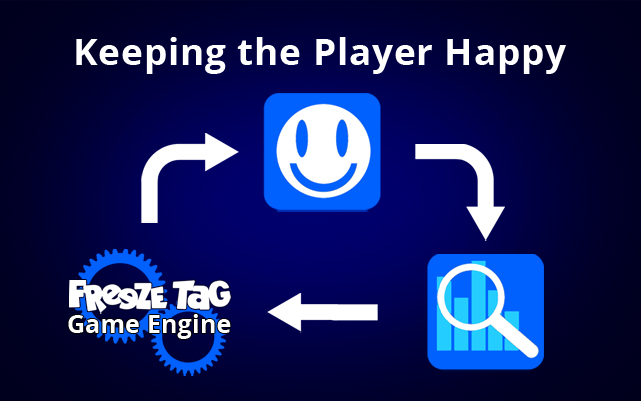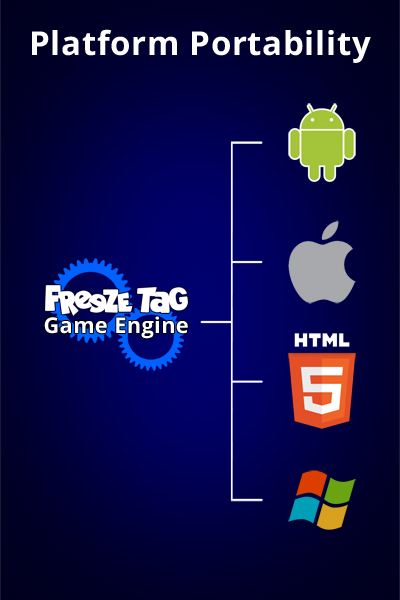Technology
Optimizing Fun and Revenues through Technology
Free-to-play Revenue Model
The game industry, like many other forms of entertainment (music, TV, books, etc.) is undergoing a major shift. The free-to-play business model has taken hold of the hearts and wallets of game players of every genre and platform. Nowhere has this been felt more deeply than the mobile market. Free is a very powerful marketing approach that is irresistible to game players. The top grossing charts on popular mobile app stores like Apple, Google, and Amazon continually show that “free” games earn the most revenue for their developers. So with all this “free-ness”, how does a game creator make any money?
Optimizing Customer Lifetime Value
The key business metric of any free-to-play game is the Customer Lifetime Value (CLV). A free-to-play gamer starts out as a zero revenue customer, but he or she may become a paying customer throughout the customer’s life of playing the game. The game creator’s business is an ongoing engagement with the game players to get them to buy things in the game, without ruining the fun. Optimizing this delicate balance is where the most revenue can be extracted.
There are many techniques for generating free-to-play revenue. They range from a simple static “pay to access more levels” model to a more dynamic model where player behaviors are systematically analyzed to strategically introduce purchase options to help the user enjoy more of the game. Freeze Tag dynamically optimizes a game’s CLV by integrating two important elements: (1) Data Analytics and (2) a Dynamic Game Engine.
This combination allows us to optimize the features of our games to refresh and update the content so that players are happily engaged and invite their friends to play with them. When players invite their friends, they lower our user acquisition costs. The longer and more often players come back to play, the more likely they are to spend money on virtual goods (through in-game purchases). The net result is a customer with a greater lifetime value. The happier customers are, the more they share with their friends and the more often they come back to spend money. Everything we do is geared to our players having more fun because ultimately customer fun translates into revenue.
Data Analytics
By using commercial and proprietary data analytics tools, Freeze Tag analyzes various aspects of the game across the entire pool of players to determine what modifications can be made to the game, which allows us to: (1) make it more fun, and (2) induce a purchase.
Some of the analysis we perform regularly are:
- Analyze the number of users that complete the tutorial process
- Determine what parts of the game users are playing most
- Identify where in the game users are dropping out, and find out why
- Average play time per day and per session
- Importance of social networks, like Facebook and Twitter, to the game
- Frequency of users playing against friends
- Identify what events most correlate with purchase events
- Identify how many invites a user is sending out, how long it takes them to send the first invite out, and how many of those players are coming in.
Dynamic Game Engine
Over the years, we have developed a proprietary dynamic game engine (Freeze Tag Engine) that allows us to make changes to game play and game economies on-the-fly, in most cases, without requiring the download of another update. We also integrate several business analytics packages into our games that provide us with real time data to measure detailed player behavior.
The Freeze Tag Engine handles tasks such as resource loading and management, choosing the appropriate render subsystem at runtime (D3D9, D3D8, OpenGL or OpenGL ES), rendering target textures, rendering the main loop, saving and restoring game preferences (fullscreen state, music and sound volumes) and player progress, game states/screens and dialogs, UI control creation and management, event callbacks, event scheduling, light weight particle effects, distortion meshes, linear and trigonometric interpolation functions for smooth animations, bitmap fonts, sound effects and music, etc.
In addition, we derive the following benefits from the Freeze Tag Engine:
- Single codebase based on open source technologies (requires less coding to transition to other platforms)
- Written in a programmer friendly language (Python) that is becoming more and more widely used
- Allows us to “bolt on” other technologies and codes to easily integrate with other SDK’s, platforms and special needs
- Interface easily with scalable backend databases and architecture
- Easily localized into new languages
- Updates can be pushed to the game allowing us to change things like:
- add new characters
- change the values in the economy
- update text
- message users (in game) about new features
- instigate a social network based contest
Optimizing Run and Revenues through Technology
The Freeze Tag Engine also integrates feedback mechanisms into our games to provide incentive for our players to communicate their favorite features and any technical difficulties they may be experiencing. By combining dynamic gaming technology and data analytics into one integrated business process, we can optimize the “fun” factor for our players and maximize the revenue potential for our company.



